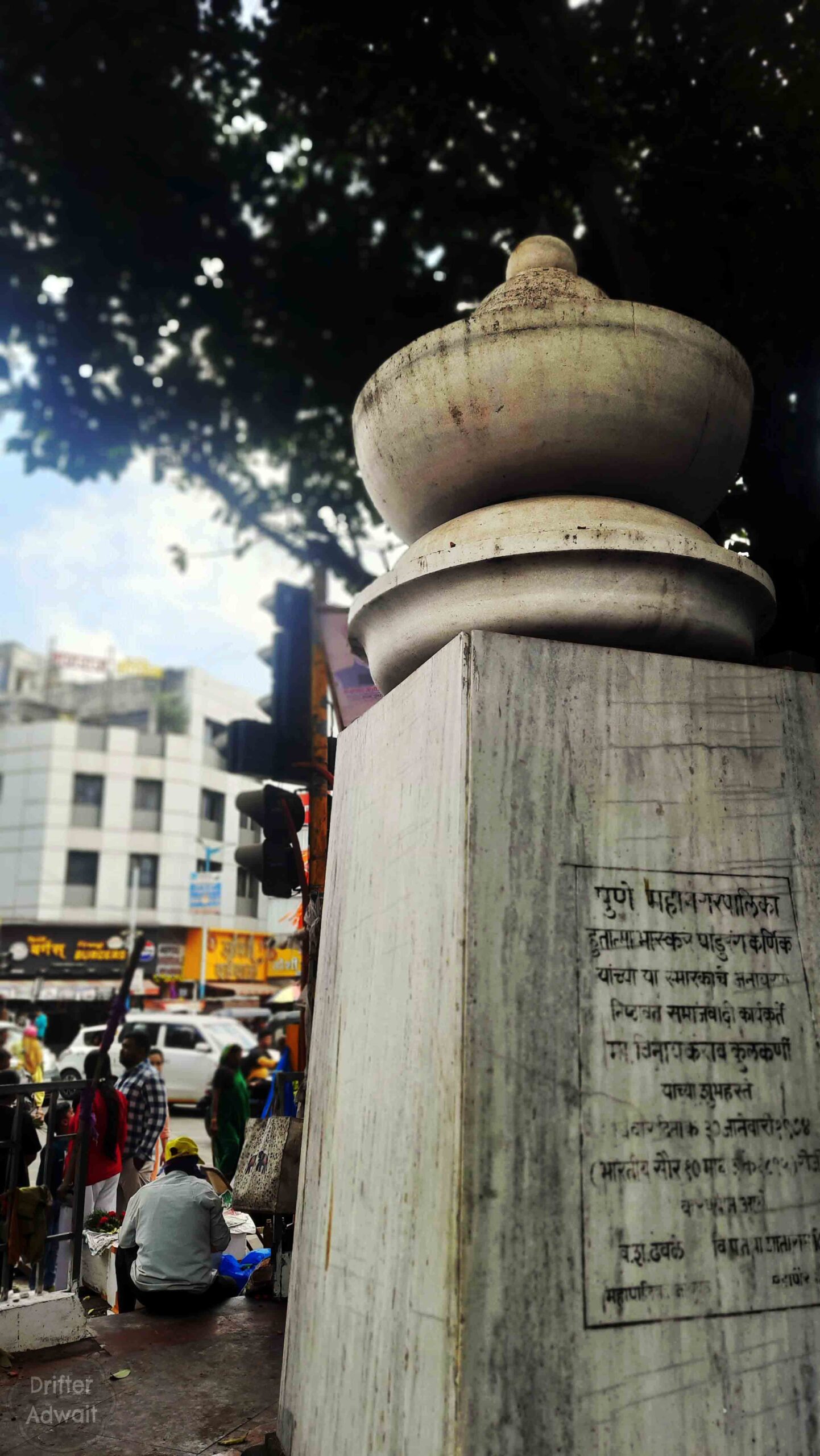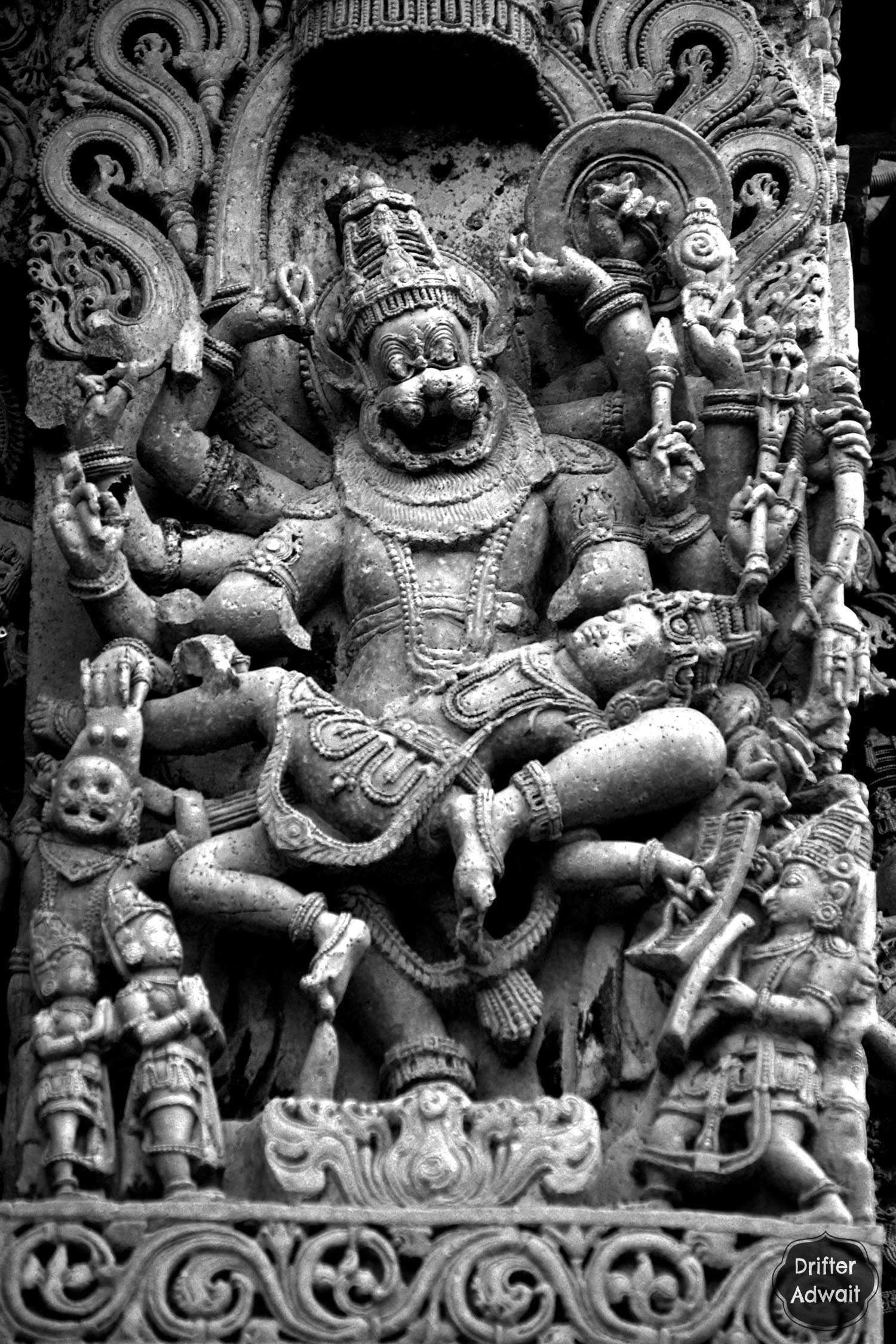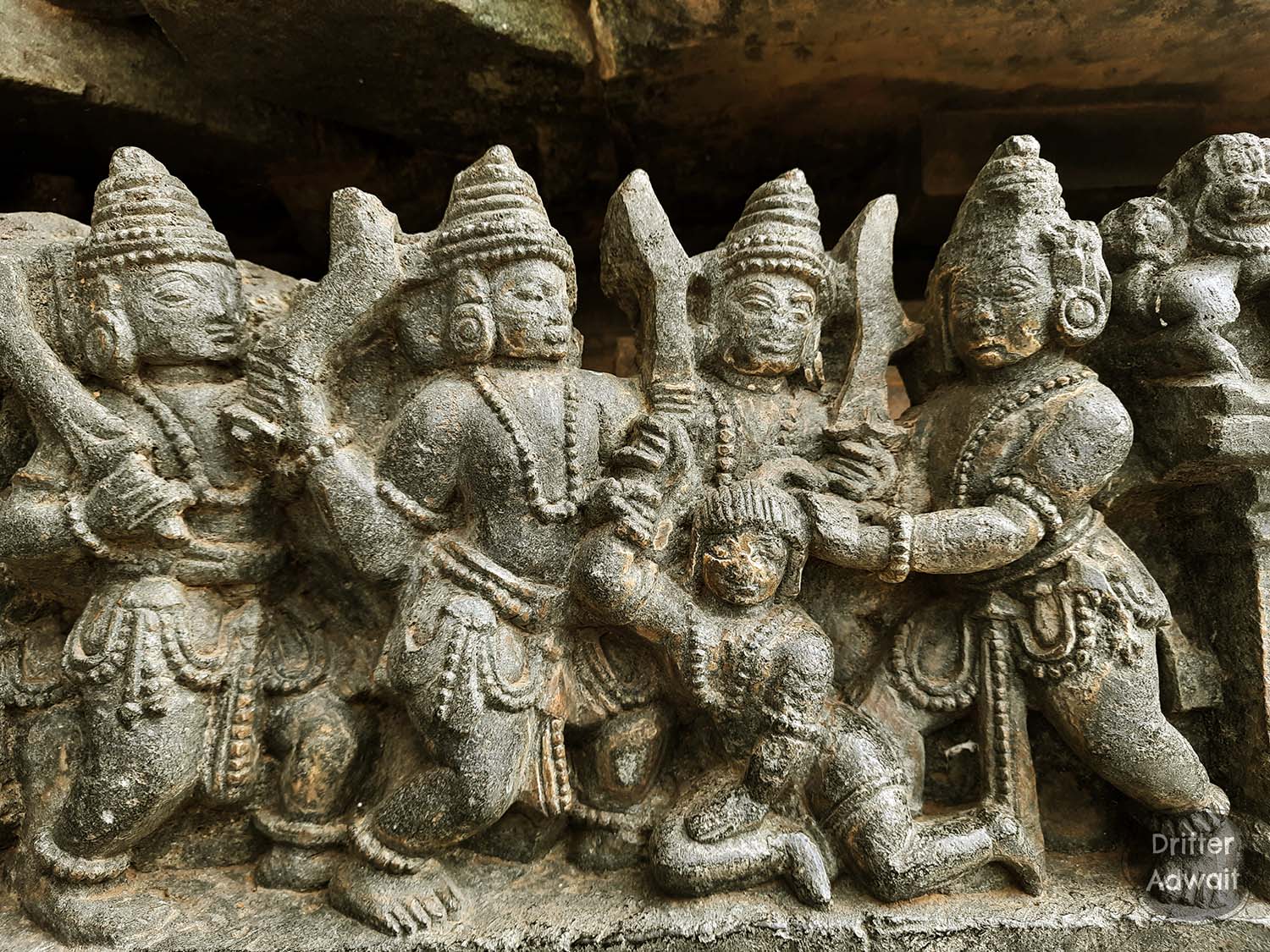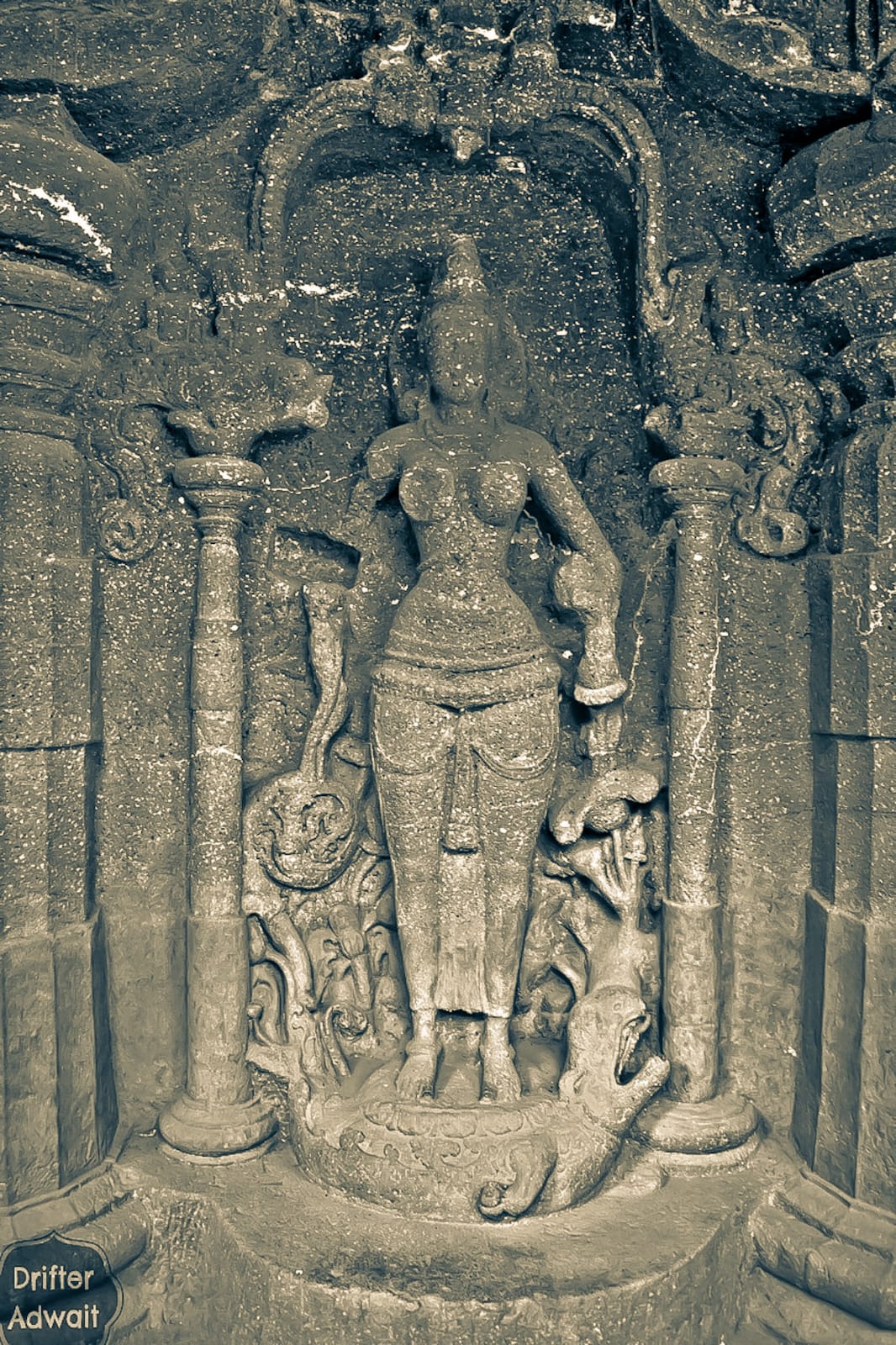In the bustling lanes of Budhwar Peth, Pune—where the air trembles with the sounds of honking traffic, murmured prayers, and the ceaseless hum of life—stands a quiet white stone pillar. Tall yet unassuming, it almost disappears amidst the color and commotion that surround the Dagdusheth Halwai Ganpati Temple and the ever-busy Mazur Adda. Every day, thousands walk past it—devotees, shopkeepers, visitors—hardly sparing it a glance. Yet upon its face is etched a name that once made the British tremble: Hutatma Bhaskar Karnik—a young revolutionary who offered his life at the altar of India’s freedom.
This forgotten pillar in Faraskhana is not merely a piece of stone. It is a silent witness, standing steadfast through time—bearing the weight of history, of courage that defied fear, of sacrifice that asked for nothing in return. In its stillness, it speaks—of a generation that dreamed of a free India, and of one young man whose heartbeat became a battle cry for his motherland.
The Flames of 1942: Pune and the Quit India Movement

Photo Credit: The Royal Archives, UK
When Mahatma Gandhi gave the call of “Quit India” in 1942, the entire nation rose in rebellion. Pune, the city once belonging to Chhatrapati Shivaji Maharaj and BajiraoPeshwa, once again became a battleground for freedom. Protest marches, strikes, and boycotts filled the streets. The air was charged with revolutionary energy.
Soon, violence erupted. Police stations were attacked, government offices burned. The Bhikardas Maruti police outpost was reduced to ashes by protestors. In response, the British unleashed terror. Armored Tanks, mounted with machine guns rolled amok through Pune’s narrow lanes. They fired not only on protestors but also on innocent citizens peeking with somewhat curious and fearful eyes from their rooftops.
Many died that day — common men, women, and children who had done nothing but watch. Their deaths left a deep scar on the hearts of Pune’s people. Among them was a young, educated man who could not bear the humiliation any longer — Bhaskar Pandurang Karnik.
A Scientist Turns Revolutionary
Bhaskar Karnik was no ordinary man. Born in Karul village, Ratnagiri district, he was a science graduate. Intelligent, disciplined, and idealistic. He worked at the Ordnance Factory in Pune, a government arms factory under British control. But the comfort of a secure job and the respect of an educated man meant little to him when his motherland was in chains.
Karnik decided that words and petitions were not enough. The British understood only one language, resistance.
Quietly, he began taking out small quantities of explosives, detonators, and flammable materials from the factory. It was dangerous. One wrong move could have meant death by hanging. But his dedication and commitment was unshakable. Soon, he had enough materials to fill half a truck.
With fellow revolutionaries Anant Agashe and Bhalchandra Bendre, he began creating hand grenades and bombs. What they couldn’t use immediately, they hid inside a small room in the Jogeshwari Temple, near the area today known as Appa Balwant Chowk.
Their next step was bold: to strike at the British soldiers themselves. Two popular theatres in Pune cantonment area (today known as Camp), West End (now Victory) and Capitol, were known gathering spots for British officers. The group decided that these would be the targets.
The Capitol Theatre Bomb Blast: 24 January 1943

On January 24, 1943, two bombs were planted — one in Capitol Theatre and another in West End Theatre. Both were crowded with British soldiers that night.
At Capitol Theatre, the bomb exploded with tremendous force. Four soldiers died, and fourteen were injured. The West End bomb failed to detonate, possibly discovered just in time.
The British were stunned. Yet once again, Punekars had showed audacity to challenge the Mighty Empire. The bomb fragments revealed that the explosives were made from their own ordnance materials. The CID quickly began interrogating factory employees. Wasting no time, descendents of ‘Inspector Lestrade’ (Sherlok Holmes ref.) arrested Narayan Vishnu Athavale, Anant Agashe, and Bhaskar Pandurang Karnik. Soon after, Bhalchandra Bendre was also caught. When police searched Bendre’s home, they found bombs, detonators, and grenade casings hidden inside his darkroom.
All suspects were taken to Faraskhana Police Station — known for its brutal British interrogations.
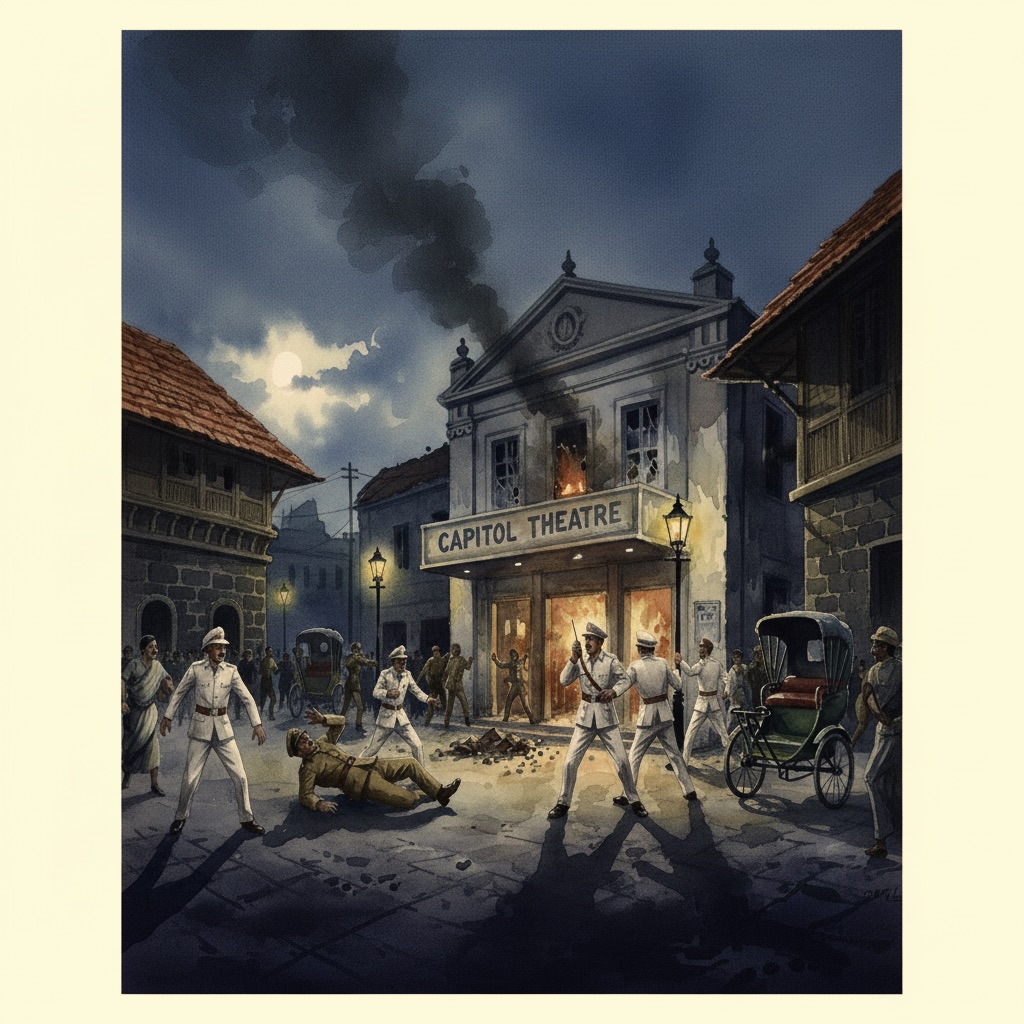
The Martyrdom at Faraskhana
The arrested men were brought to the notorious Faraskhana Police Station, where countless freedom fighters were interrogated and tortured. The British believed that Karnik, being educated and connected to the factory, would reveal everything.
But they did not know his resolve.
Just before the interrogation was about to began, Bhaskar requested to use the restroom. Once inside, he took out a cyanide capsule he had carried secretly. His last weapon. Without hesitation, he swallowed it. Within moments, he collapsed.
He died silently, protecting his fellow fighters, his cause, and his country.
That day, in a small police station in Pune, a young scientist became a martyr. His death preserved the secrets of an entire revolutionary network. The British were left furious and helpless.
Trials, Torture, and Defiance
Following Karnik’s martyrdom, two major cases were filed — one for the Capitol Theatre bombing and one for the ordnance factory theft. The British investigators, led by the ruthless Mr. Roach, brutally tortured the remaining accused.
Yet, their spirits did not break. Many refused to confess.
During one trial, a young revolutionary named Digambar Damodar Divekar, only 19 years old, stabbed Roach in open court — an act of fearless defiance and revenge. Though Roach survived, Divekar was arrested and jailed for life.
Revolutionary lawyer Mr. Nariman defended the accused passionately, while Hon. Judge Patil, secretly sympathetic to the cause ensured justice was not denied. Eventually, Agashe and Bendre were sentenced to light terms, while others were acquitted for lack of evidence.
The White Pillar of Faraskhana: A Silent Witness
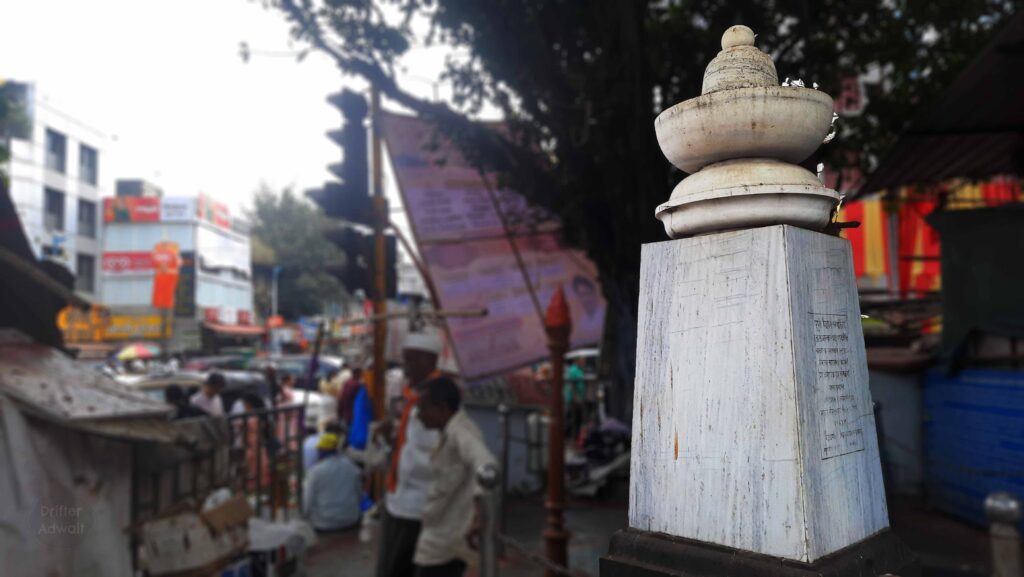
After twenty-nine long years, a memorial to Bhaskar Karnik now stands in Faraskhana—a silent sentinel to a young man whose fire once blazed for freedom.
He was a boy from Karul village in Ratnagiri district. A highly educated science graduate, with a dazzling future ahead. Comfort, respect, and a secure life waited for him. But even in that comfort, he heard another call—the call of a nation in chains. The lure of a stable job, the prestige of education, the promise of an easy life, all of it faded before the burning vision of a free motherland. The determination to shatter the shackles of slavery, to see the true ‘Bhaskar’—the Sun of freedom—gave him no rest.
Yet Bhaskar Karnik chose not the soft path of Satyagraha. He turned instead toward the perilous road of revolution, the armed path. That spark was born of the same water and soil that once nourished Chhatrapati Shivaji Maharaj and Peshwa Bajirao. This was Pune, the land where the first battlecry for Swarajya thundered, where battle horns once echoed through the forts, and the lamps of valor burned bright. From that same sacred legacy rose a young science graduate, who hurled himself, fearlessly, into the blazing furnace of explosives for his motherland.
Today, during the Ganpati festival, this part of Pune overflows with life. Lakhs of devotees gather to seek blessings from Shreemant Dagdusheth Halwai Ganpati. Bells ring, Aartis resound, Atharvashirsha chants fill the air, Dhol-Tasha beats shake the ground, and petals rain like divine blessings. Amidst this ocean of faith and festivity, just a few steps away, the pillar of Bhaskar Karnik stands—quiet, unmoving, almost forgotten.
But how many of us pause before it?
Just imagine—if even one percent of these millions, after offering prayers to Lord Ganesh, stopped for two brief moments to bow their heads before this memorial, what a powerful tribute that would be. For offering flowers to God is Bhakti, but offering remembrance to those who gave their lives for the nation is our sacred Dharma.
The Bhaskar Karnik Memorial, drowned in the crowd yet steadfast in its silence, whispers to us every single day—
“Freedom is never gifted—it is earned with blood.”
Around this time, the country was gripped by unrest — bomb blasts, protest marches, and acts of looting against British rule were breaking out across India. Newspapers everywhere were filled with reports of these turbulent events. But the case in Pune held particular significance. Kesari, the influential newspaper, published a special report on it. When this incident was later traced in an old issue of Kesari, the following account came to light:
१. (केसरी मंगळवार तारीख 2 फेब्रुवारी 1943, पृष्ठ क्रमांक सहा)
जोगेश्वरीच्या देवळात बॉम्ब! भा. पा. कर्णिक यांची आत्महत्या!
पुणे तारीख 1 : पुण्याजवळील एक बॉम्ब कोठारातून काही बॉम्ब चोरीस गेले असल्याची बातमी कळताच सीआयडी इन्स्पेक्टर यांनी त्याबाबत चौकशी केली व कोठारावर देखरेख ठेवणाऱ्या काही इसमांची झडती घेतली. त्यात श्री नारायण विष्णू आठवले, आगाशे व जोगेश्वरीच्या देवळातील पुजारी श्री बेंद्रे यांचा मुलगा श्री भालचंद्र दामोदर बेंद्रे यांच्या घराच्या झडत्या घेतल्या. यापैकी जोगेश्वरीच्या देवळातील बेंद्रे यांचे घरी सहा बॉम्ब, त्याच्या वाती व बॉम्ब संबंधीचे वाङ्मय सापडले. श्री आठवले व श्री आगाशे यांचे घरी आक्षेपार्ह वाङ्मय व काही सामान सापडले. तसेच श्री भालचंद्र पांडुरंग कर्णिक यांच्या ही घराची झडती घेण्यात आली व त्यास अधिक चौकशीसाठी फरासखान्यात नेले. तेथे ते लघवीला जातो म्हणून सांगून संडासात गेले व तेथे मरण पावले. त्यांनी संडासात विष खाल्ले की त्या अगोदर केव्हातरी विष प्राशन केले हे काही सांगता येत नाही.
२. (केसरी शुक्रवार 12 फेब्रुवारी 1943, पृष्ठ क्रमांक पाच)
दंगल, जाळपोळ, बॉम्बस्फोट, अटक, शिक्षा!
गुरुवार तारीख 11: गेल्या ऑक्टोबर महिन्यात भिकारदास मारुती जवळील पोलीस चौकी जाळणे व दंगल करणे या आरोपावरून आठ जणांवर खटले भरण्यात आले होते. त्या खटल्याचा आज निकाल लागून कोर्टाने सहा आरोपींपैकी पाच जणांना प्रत्येकी दीड वर्ष सक्त मजुरी व 10 फटके अशी शिक्षा सांगितली. बाकीच्या तीन आरोपींना निर्दोष सोडले पण लगेच त्यांना भारत संरक्षण कायद्याखाली अटक झाली.
३. (केसरी शुक्रवार 4 जून 1943, पृष्ठ क्रमांक चार)
बुधवार २ तारीख: 24 जानेवारी रोजी रात्री येथील वेस्ट एंड व कॅपिटल या चित्रपटगृहात झालेल्या बॉम्बस्फोट प्रकरणी श्रीधर लिमये, बी व्ही चव्हाण, पी एल साळवी, एल टी कुलकर्णी व आर आर परदेशी यांना पूर्वीच अटक करण्यात आली होती. आता त्यांच्यावर आरोप पत्रिका (चार्जशीट) तयार झाली असून ती डिस्ट्रिक्ट मॅजिस्ट्रेट कडे पाठवण्यात आली आहे.]

References:
- Kesari Issues (February 2, 1943; February 12, 1943; June 4, 1943). [Original reports consulted]
- Lawate, Mandar. “Capitol Theatre Bomb Blast, Pune History | Capital Bomb Blast.” YouTube, Channel: Mandar Lawate.
- Lawate, Mandar. “Karnik, Freedom Fighter and Revolutionary.” YouTube, Channel: Prakash Khanchandani.

Content and Photo Credit: Private Postcard Collection, Pune

Photo Credit: Private Postcard Collection, Pune
